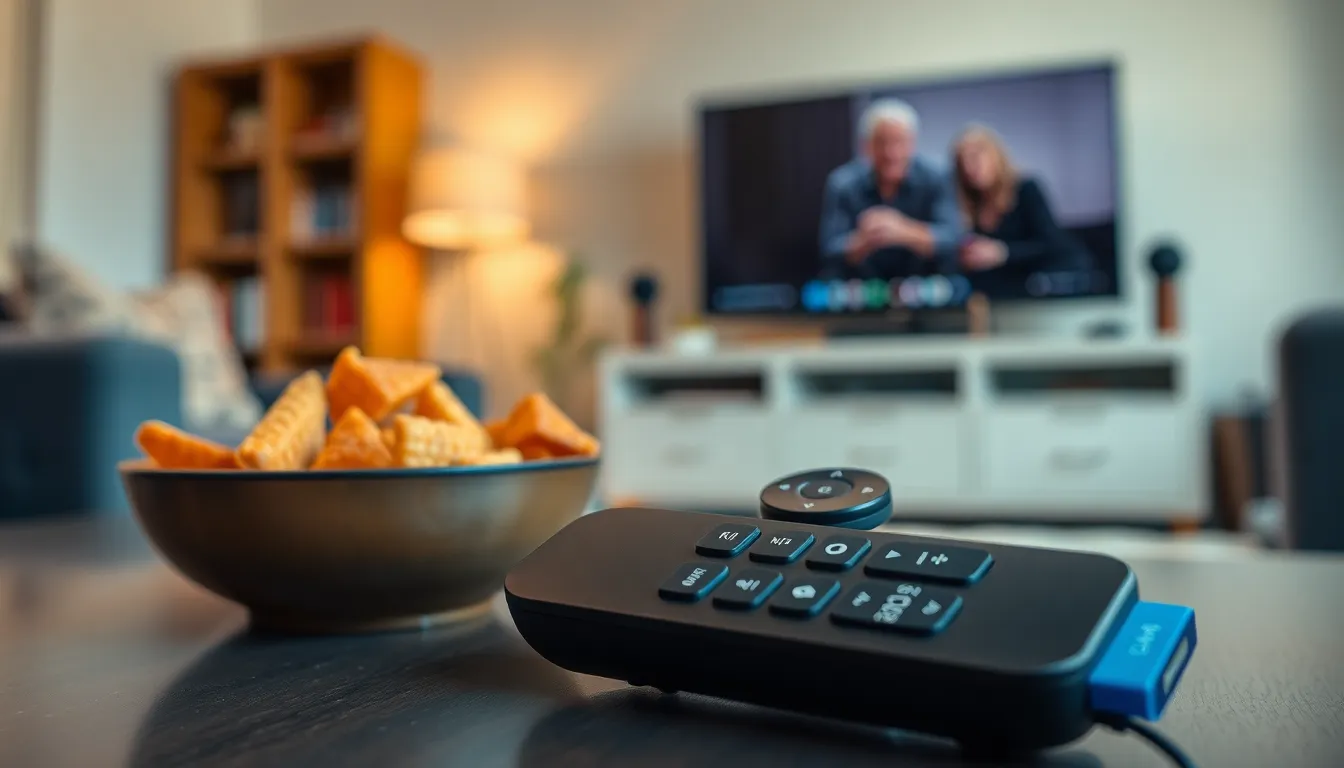Imagine settling in for a cozy night of binge-watching, only to find your Roku remote doesn’t have a pairing button. What gives? It’s like showing up to a potluck without a dish. Confusion can set in, and frustration might bubble up faster than that popcorn in the microwave. But fear not!
Many Roku remotes skip the pairing button altogether, relying on a different method to connect. Understanding this quirk can save you time and keep your viewing experience smooth. So grab your favorite snack and let’s dive into the world of Roku remotes, where simplicity meets a dash of tech magic.
Table of Contents
ToggleOverview of Roku Remotes
Roku remotes come in various designs, each offering unique features. Some include a pairing button, while others rely on different methods for connection. Users often encounter remotes without pairing buttons, which can lead to confusion. Connectivity for these remotes commonly occurs through infrared signals or Wi-Fi Direct.
Roku’s standard infrared remotes allow for basic functions without requiring pairing. These remotes communicate by sending signals directly to the streaming device, making them straightforward for everyday use. For remotes that require Wi-Fi, a simple setup process occurs once the device connects to the home network.
Voice control features are present in some advanced remotes, enabling users to search for content hands-free. Play and pause options also add convenience during viewing. Additionally, certain Roku remotes come equipped with volume control, enhancing the user experience.
Different models may lack a pairing button, so identifying the remote type is essential. Users can easily locate control features by consulting the Roku remote guide online. Checking the remote’s batteries ensures proper functionality, as low power can often lead to connectivity issues.
Convenience and accessibility are key aspects of Roku remotes. Simplifying choices and functionalities helps create an enjoyable experience for viewers. Understanding your Roku remote’s type can improve connections and minimize frustrations.
Understanding the No Pairing Button on Roku Remote

No pairing button on a Roku remote can lead to uncertainty. Many users express confusion when their devices don’t conform to expected standards for connection. It’s important to understand how Roku remotes function to enhance user experience.
Importance of Pairing
Pairing allows enhanced features on Roku remotes, especially for models that utilize Wi-Fi Direct. When paired, the remote communicates directly with the device, enabling functionalities such as voice control and private listening. Lag or disconnections might occur without pairing, affecting viewing experiences. For those using infrared remotes, pairing is unnecessary as they work seamlessly with basic controls. Understanding the role of pairing helps users maximize their remote’s capabilities.
Types of Roku Remotes Without Pairing Buttons
Several types of Roku remotes do not feature a pairing button. Standard infrared remotes function without the need for pairing. These remotes handle essential tasks like changing channels and volume. In contrast, users might find advanced remotes lacking a physical pairing button but capable of connecting through Wi-Fi Direct once set up. Some models come with additional features that enhance usability, so knowing the remote type helps users navigate their devices effectively. Identifying the remote style facilitates a smoother viewer experience.
Troubleshooting Connectivity Issues
Roku remotes without a pairing button can still connect successfully. Understanding the method of connection is essential in resolving issues that may arise.
Steps to Connect Without a Pairing Button
- Ensure the TV and Roku device are powered on.
- Insert fresh batteries into the remote.
- Aim the remote at the Roku device, as it uses infrared signals.
- Press any button on the remote to establish a connection.
- For Wi-Fi Direct remotes, navigate to the Roku settings on the TV and select the remote setup option.
These steps guide users to connect their remotes effectively, avoiding the frustration of disconnection.
Common Problems and Solutions
Battery-related issues often lead to connectivity problems. Replacing old batteries typically resolves this concern. Lagging remote response may occur due to obstacles blocking the infrared signal. Clearing the line of sight can improve responsiveness.
In some cases, a Roku device may not recognize a remote. Restarting the Roku device and the remote can refresh connections. If problems persist, moving closer to the Roku box may enhance the signal strength. Exploring these common solutions helps users maintain a seamless viewing experience.
Alternatives to Pairing Buttons
Roku users can connect their devices effectively without a pairing button. Two popular alternatives include the mobile app and HDMI-CEC features.
Using Mobile App for Roku
One effective solution is using the Roku mobile app. The app functions as a virtual remote, enabling users to control their Roku device directly from their smartphones. Individuals can download the app from app stores for both iOS and Android. Once the app is installed, it connects to the same Wi-Fi network as the Roku device. Access to all remote features, including voice search and keyboard input, makes navigation easier. Additionally, users can quickly adjust settings or launch channels through the app.
HDMI-CEC Feature
Another option involves utilizing the HDMI-CEC feature. Many modern TVs support this technology, allowing users to control Roku devices through their TV remotes. Users should enable HDMI-CEC in their TV settings to use this feature. This setting may appear under different names, including Anynet+ or Bravia Sync, depending on the manufacturer. Once activated, commands from the TV remote also control Roku functions. The convenience of this integration simplifies the viewing experience and eliminates the need for multiple remotes.
User Experiences and Feedback
Users report varying experiences with Roku remotes that lack a pairing button. Many express frustration when their remotes fail to connect, especially when trying to utilize advanced features. Confusion often stems from not knowing that some remotes rely on infrared signals or Wi-Fi Direct instead of conventional pairing.
The absence of a pairing button leads some users to doubt their remote’s functionality. Various feedback highlights that standard infrared remotes can still perform essential tasks without pairing. Others rely heavily on advanced remotes, which, despite lacking a visible pairing mechanism, can connect through a simple setup process involving Wi-Fi Direct.
Technical issues frequently emerge during remote setup. Users describe situations where fresh batteries aren’t recognized or obstacles disrupt the infrared signal. Restarting devices usually resolves the problem, though this step isn’t always obvious to first-time users. Feedback from experienced users emphasizes the importance of positioning the remote correctly toward the Roku device.
Mobile app usage garners positive responses. Individuals appreciate the Roku mobile app as a convenient alternative to control Roku devices without a physical remote. Users find that utilizing HDMI-CEC functionalities allows TV remotes to operate Roku devices, thus simplifying the overall experience.
While challenges exist, users who understand their remote type often encounter fewer difficulties. Many recommend familiarizing oneself with available features and troubleshooting methods. Feedback consistently underscores the need for patience during setup processes.
Navigating the quirks of Roku remotes without a pairing button can be challenging. However understanding the different connection methods available helps users maximize their viewing experience. By identifying the remote type and utilizing alternatives like the Roku mobile app or HDMI-CEC features, users can overcome initial frustrations.
With a little troubleshooting and knowledge of the remote’s capabilities, anyone can enjoy seamless control of their Roku device. Embracing these solutions ensures that users can focus on what really matters—enjoying their favorite shows and movies without interruption.





